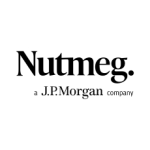Fixed term Income Investments versus Income Funds
The need for high income remains firmly at the top of the New Year wish list for both savers and investors and as the hunt for high yield opportunities continues, being able to quickly understand and compare the numerous options available is still as important as ever.
To start the year as we mean to go on, we compare two of our most popular fixed term income investments with some of our best selling income funds in order to help you decide whether they might meet your income needs.
2013 – setting the scene?
If there is one thing 2013 taught both savers and investors, it is the harsh reality that the UK is still very much a part of the global financial crisis – record low interest rates, historically low savings rates, above target inflation and little in the way of economic growth. So will 2014 bring more of the same?
Unfortunately, it would appear that this will indeed be the case since there is little on the horizon that fills us with a sense that the end is in sight. A small drop in unemployment and inflation is of course welcome, but these are not the early signs of a sustained recovery and there still remains great uncertainty around what the coming years might hold for us all.
Low interest rates here to stay
When the chief economist of the Bank of England, Spencer Dale, stresses that interest rates will not rise until the UK economy sees “a prolonged period of strong growth” with lower unemployment and higher real incomes*, there would appear to be very little to cheer about if your top priority is finding high income returns from your capital.
He went on to state that we are a long way off the economy being fully recovered and to this end raising interest rates remains some way in the distance. Even the most bullish of savers will, therefore, remain at their record lows for some time to come. So regardless of what happens to inflation in the coming months and years, losing money in real terms seems to be the order of the day unless some level of capital risk is undertaken. The alternative is to risk losing money in real terms.
Fixed term investments proving popular
Against this economic backdrop it is perhaps easy to understand why income investments remain a top priority and by combining defined returns for a defined level of risk, fixed term investments are proving popular with both investors as well as savers looking to take on more risk with some of their capital.
Two of our most popular that are striking a chord with those in the hunt for higher returns are provided by Investec and Morgan Stanley. The FTSE Income Accumulator from Morgan Stanley offering investors a potential yield of up to 7% depending on the performance of the FTSE 100 Index while the Enhanced Income Plan from Investec pays a fixed income of 5.64% each year, regardless of what happens to the stock market.
Both put your capital at risk, the Investec plan if the Index falls by more than 50% and the Morgan Stanley plan should the Index fall below 4,000 points. This is known as conditional capital protection and is a key differentiator between fixed term investments such as these and investment funds which are subject to the daily rises and falls of the stock market.
Fixed versus variable income
One of the main differences between these two plans is that Investec offers a fixed income while Morgan Stanley’s is dependent on the performance of the FTSE. The ability to be paid a high level of fixed income regardless of what happens to the stock market is clearly an attractive feature, especially when at 5.64% the income level is almost 2.5% higher than the return savers could currently expect to receive from leading fixed rate bonds, in return for putting their capital at risk. This means that the investor has the certainty of knowing at the outset exactly how much he will receive each and every year and the risks involved.
The Income Accumulator Plan offers the potential for a higher income of up to 6.5%, but this is dependent on what happens to the Index. For each week the FTSE is between 4,500 and 9,000 points income is accrued, up to a maximum of 1.625% each quarter, equivalent to 6.5% each year. If the FTSE ends any week outside of this range you only miss out on income for that week, rather than the whole quarter.
Therefore, the main difference when comparing income levels of these two investments is either the potential for a higher yield, or accepting a slightly lower income in return for the peace of mind that this will be paid regardless of the performance of the stock market.
Monthly versus quarterly payments
Another important feature of income investments is how often income is paid out. The most common payment frequencies are bi-annually, quarterly and monthly with the more regular frequencies usually being the most popular.
The Enhanced Income Plan makes a monthly payment, equivalent to 0.47% of your initial investment. Monthly income can be the most useful in terms of budgeting and is attractive when looking to supplement existing income. The Morgan Stanley plan potentially pays out any accrued income at the end of each quarter, thereby providing a regular opportunity to receive an income payment while many equity investment funds only offer twice yearly payments.
Fixed term
Both plans have a fixed term of six years and although you do have the option to withdraw your money early (and in this respect is not dissimilar to investment funds), both investments are designed to be held for the full term and early withdrawal could result in you getting back less than you originally invested.
The fixed term may though appeal to those who wish to plan around this and combined with either a fixed return or the potential for a high yield and quarterly payments, this gives a clear picture of what the coming years could yield. With so much uncertainty around when interest rates might rise, either investment could be seen as a viable option.
Conditional capital protection
When considering investment options it is important to understand the balance of risk v reward. Inevitably, the opportunity to receive high fixed returns or the potential for higher returns than might be available from cash deposits, requires the investor to put their capital at risk.
Another feature of these two investments which could be attractive when making comparisons to other capital at risk income investments is the conditional capital protection included in both – this means that the return of your initial investment is conditional on the performance of the FTSE. For the Investec plan, provided the FTSE does not fall by more than 50% of its starting value throughout the investment term then you will receive a full return of your original investment. However, if it does fall below 50% and also finishes lower than the starting value, your initial investment will be reduced by 1% for every 1% fall and so you could lose some or all of your initial capital.
In comparison, the barrier for the Morgan Stanley plan means that provided the FTSE 100 Index does not fall below 4,250 points, you will receive a full return of your original investment. In the event that the FTSE does finish below this level then your initial capital will be reduced by the same percentage as the fall in the Index. Unlike the Enhanced Income Plan, this is measured on the final day of the investment only, rather than on each day throughout the investment term.
Risk v reward
The principle of risk v reward means that the search for potentially higher returns leads to the need to put your capital at risk. A good benchmark for assessing your investment is to compare what you could get from a fixed rate deposit over a similar timeframe and then consider whether you are comfortable with the risk you are taking in order to receive either a high fixed return or the potential for a higher return.
Leading five year fixed rates are currently offering around 3.2% and so by accepting risk to your capital, the Investec plan increases your fixed return by over 2.4% a year (since the fixed income from this investment is 5.64%) while the Morgan Stanley plan offers the opportunity to more than double your returns each year. With the savings market failing to meet the need for higher income the decision is whether you are comfortable with putting your capital at risk and the conditional capital protection offered in return for the yields on offer and the potential to protect your income from the effects of inflation.
Credit ratings and agencies
Unlike a fund, your investment is used to purchase securities issued by Investec and Morgan Stanley respectively and therefore, their ability to meet financial obligations becomes an important consideration. This is known as credit risk and means that in the event of either company going into liquidation, you could lose any future returns as well as some or all of your initial investment and these investments are not covered by the Financial Services Compensation Scheme for default alone.
One accepted method of determining credit worthiness of a company is to look at credit ratings issued and regularly reviewed by independent companies known as ratings agencies. Moody’s is a leading credit agency and as at 2nd December 2013, Morgan Stanley has been attributed a Baa2 rating with a stable outlook while Investec has been attributed Baa3 with a negative outlook. The ‘Baa’ rating means that both institutions are subject to moderate credit risk. They are considered medium grade and as such may possess certain speculative characteristics. The ‘1’ is at the upper end of this rating grade and ‘3’ is at the lower end. The stable outlook means the rating is not subject to change in the immediate future whilst the negative outlook indicates that the rating may be lowered in the short to medium term (between 6 months to 2 years).
Global profiles
Investec is an international specialist bank and asset manager with its main operations in the UK and South Africa. Established in 1974, as at April 2013 they look after £96.8 billion of customer assets as well as a further £25.3 billion of customer deposits and employ around 7,575 people. They specialise in a number of areas, particularly within the banking sector and are a leading provider of investment plans and structured deposits.
Morgan Stanley is a multi-national investment bank and asset manager with operations in 36 countries. Established in 1935, they are one of the largest global asset management businesses with asset under management of $341 billion (as at March 2013). They employ over 54,000 people in more than 1,200 offices around the world.
Compared to investment funds
When compared to investment funds, the main differences is that investment plans have fixed terms (normally 5 or 6 years) rather than being open ended, and they also include conditional capital protection.
This latter feature means that the return of your initial investment is conditional on the FTSE not falling by more than 50% of its starting value or a fixed level such as the 4,250 point barrier within the Morgan Stanley plan. This offers the investor some protection against a falling market whilst the investment fund will put your capital fully at risk on a daily basis. Both types of investment put your capital at risk however and so you should be prepared to lose some or all of your initial investment prior to committing your capital.
A further feature of Investec’s Enhanced Income Plan is that it offers a high level of fixed income each month whereas most equity funds offer either quarterly or twice yearly income. The income is also fixed and is therefore paid to you regardless of the performance of the stock market so the investor has the certainty of knowing at the outset exactly how much they will receive and for how long. Since yields on investment funds are variable this is a distinct difference which in the current climate could make for an attractive income alternative.
One final important difference is that unlike a fund, a fixed term investment is used to purchase securities issued by the counterparty, usually a specialist or private bank, and so their ability to meet financial obligations becomes an important consideration since if they fail and are unable to meet such obligation you could lose some of all of your initial capital as well a any rights to future income.
There are various global credit rating agencies which assist in determining the potential credit worthiness of these institutions but the splitting of your investment amongst a wide number of companies brings with it diversification benefits which are often cited as an important and attractive feature.
Click here to compare our best selling UK equity income funds >>
Fair Investment Fund Supermarket
With over 1,500 funds from over 90 investment managers, the Fair Investment Fund Supermarket offers a vast choice of income funds, many of which have 0% initial charge as well as a discount on annual management charges of up to 0.2%.
Click here to find out more about the Fair Investment Fund Supermarket >>
Fair Investment conclusion
The market for income investments can be full of attractive headline yields but it is important to fully understand how each investment works and the risks it entails. Whether this is inflation risk, risk of capital loss or fluctuating yields, it should always be remembered that it is the income and capital loss/rise combined that produce your overall return.
Commenting on the two investments, head of savings and investments at Fair Investment Company Oliver Roylance-Smith said: “As an alternative to open ended investment funds, the defined return and defined risk offered by fixed term investments offer investors a different approach to achieving income. Their conditional capital protection also means that your initial investment has some protection against a falling market. Combined with either a fixed or variable income and these plans can offer a competitive balance of risk versus reward that could be considered by both savers and investors.”
All of the above investments are available as new ISAs, ISA transfers and non-ISA investments.
Click for more information about the Investec Enhanced Income Plan >>
Click for more information about the Morgan Stanley Income Accumulator Plan >>
Click here to compare income investments >>
* Speech at the Confederation of British Industry, December 2013
No news, feature article or comment should be seen as a personal recommendation to invest. Prior to making any decision to invest, you should ensure that you are familiar with the risks associated with a particular investment. If you are at all unsure of the suitability of a particular investment, both in respect of its objectives and its risk profile, you should seek independent financial advice. Tax treatment depends on your individual circumstances and may change and may be subject to change in the future.
These are structured investment plans which are not capital protected and are not covered by the Financial Services Compensation Scheme (FSCS) for default alone. There is a risk of losing some or all of your initial investment. There is a risk that the company backing the plan or any company associated with the plan may be unable to repay your initial investment and any returns stated. In addition, you may not get back the full amount of your initial investment if the plan is not held for the full term. The past performance of the FTSE 100 Index is not a guide to its future performance.
Tags





